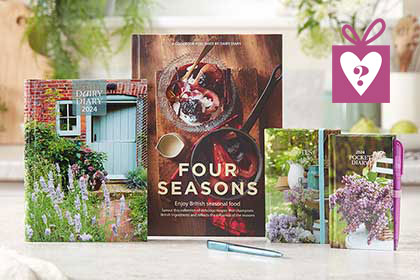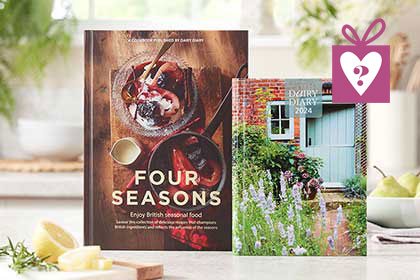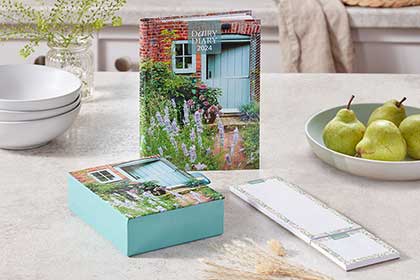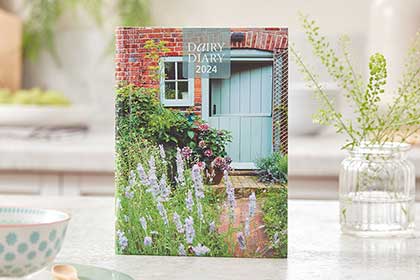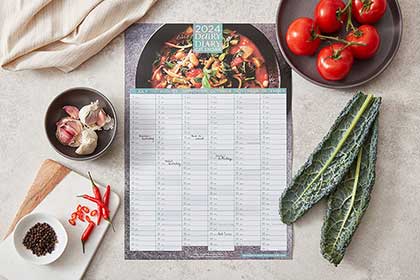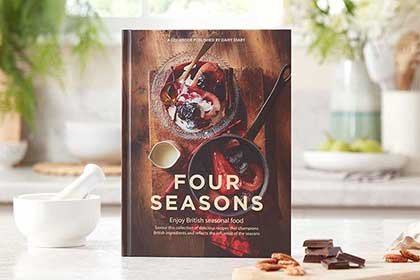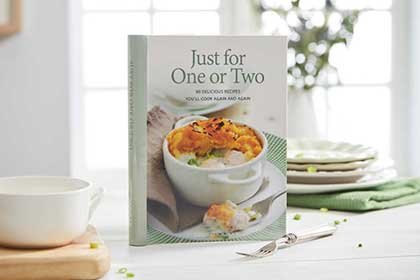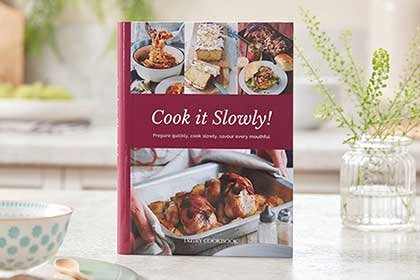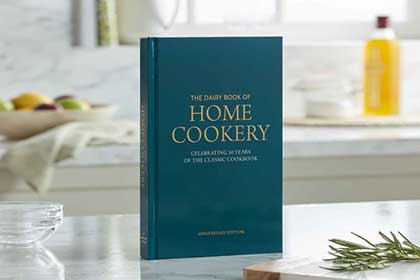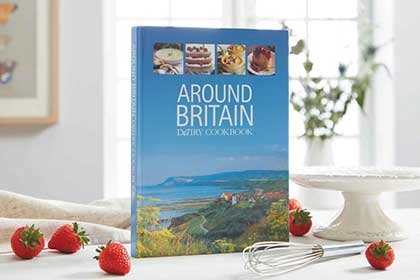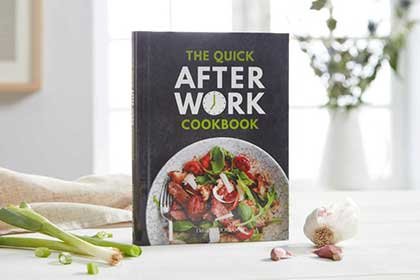Regional British Food part 2: Western England
Rarely celebrated today, 29 May is also known as Oak Apple Day, the former public holiday held to commemorate the restoration of the monarchy.
In some regions, and in particular the midlands, celebrations of Oak Apple Day continue to this day where it is common for people to decorate their houses with oak branches or wear a sprig of oak as their ancestors once did.
In Northampton, a garland of oak apples is laid at the statue of King Charles II, whilst in Castleton, Derbyshire, the Garland King rides through the streets of the town at the head of a procession. The medieval Great Hall at the Commandery in Worcester, where a portrait of Charles II portrait hangs, is festooned with garlands of oak leaves and its gardens filled with Morris dancing, garden games and living history.
As with every region of Britain, Western England is also famed for its culinary heritage. From the Staffordshire oatcake to Birmingham Bacon Cakes, Malvern Cherry cake and Shrewsbury biscuits, Worcestershire sauce and, of course, Cadbury chocolate.
Our Around Britain Cookbook showcases some classic recipes from this region of central England and introduces us to more of its culinary history.
Just for One or Two
A superb collection of recipes for all occasions including delicious main courses, sumptuous desserts and brilliant bakes.

Around Britain Cookbook Western England Guide
The shire counties are sometimes known as the Heart of England and certainly, the rolling Malvern Hills, the honey-stone Cotswold cottages and the orchards seen in these western regions are quintessentially English sights.
The region is a foodie’s delight for every year the Ludlow Food Fair highlights the huge variety of excellent fare on offer. The warm, moist climate and rich, heavy soil create fertile conditions for fruit and vegetables, while the grassy hills have long been populated by sheep, which provide meat and wool for the weaving industries.
But it is dairy farming in this region that provides ingredients for its well-known chocolate bars and yogurt desserts. Also renowned are its cheeses, such as the golden Double Gloucester, excellent in a variation of Welsh rarebit called Gloucester cheese and ale (page 34), where cheese and mustard are baked in brown ale. Land where cows graze happily will also fatten beef cattle and this region hosts the famous white-faced Hereford breed, which produces meat of great flavour and tenderness.
The sheep that graze the Cotswold Hills have inspired many lamb dishes, including the curiously named Gloucestershire squab pie, which blends the meat with spices and apple, and the equally misleading Oxford John steak (page 124), which is actually leg of lamb with capers. Other popular meat dishes in this region are faggots (originally made from offal with herbs and spices) and the beef-based Warwickshire stew. However, pork is the meat mainstay, perhaps because pigs once did the job of removing the windfalls in the apple, pear and plum orchards of this region. There is even a ‘Midlands cut’ of bacon, and a dish popular on the borders of the Welsh Marches is loin of pork with cabbage cake.
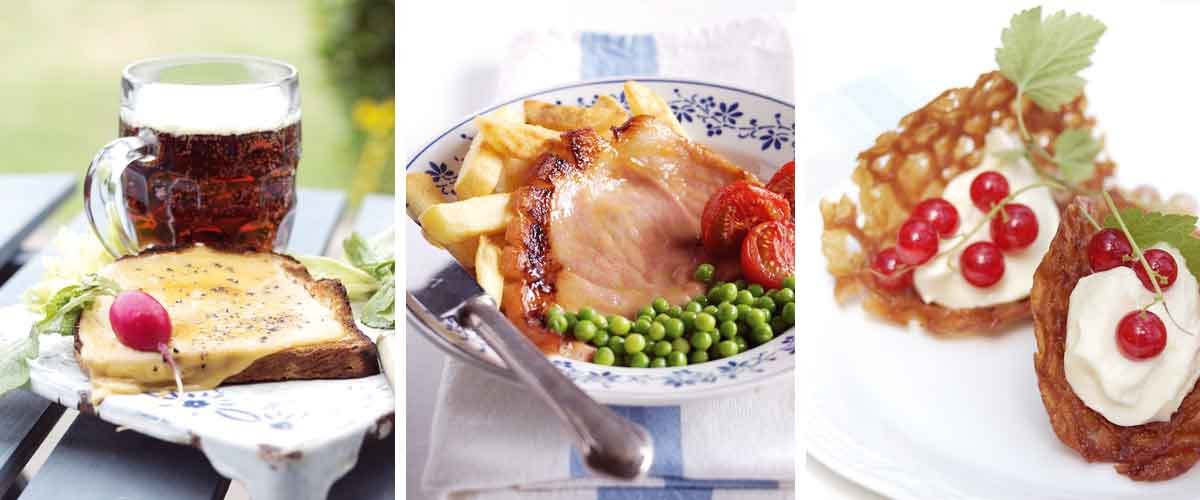
While we’re on the subject of cake, there are several notable recipes from Western England. Brandy snaps (see page 71) and gingerbread are both local favourites. Staffordshire fruit cake is a well-known recipe made extra rich with the addition of black treacle and brandy; there is also a spiced Oxford cake and, best known of all, the Banbury cakes originating from that north Oxfordshire town. These are made from puff pastry filled with raisins and dried fruits.
Other eponymous recipes include Shrewsbury biscuits (page 77), which are rather like shortbread, Coventry God cakes (a traditional christening gift from godparents) and the great favourite of Staffordshire, oatcakes, which are closer to pancakes than oat biscuits and can be eaten with sweet or savoury accompaniments.
No review of the food from this area can omit to mention the famous Worcestershire Sauce, a liquid that adds flavour to almost any savoury recipe and which originated when the Governor of Bengal returned to his native Worcester and tried to re-create an Indian recipe. The sauce was a complete disaster until tasted after several months when it had matured into the fine ingredient still used today. Similarly bizarre is the heritage of Cooper’s Oxford marmalade, which is famous for its chunks of bitter peel from a variety of Seville oranges grown in Andalusia. Apparently, hardly anybody else can use the fruit because it’s so bitter!
Castles, Cotswolds and Crockery
Western England provides a miniature history of Britain. It starts with the infighting between different regions and the quest for the English crown, which led to the building of huge fortresses to protect land and power. The best-preserved example of a medieval castle in Britain is at Warwick, where the immense proportions of this 1000-year-old fortress are still a formidable sight.

Less intact but full of history is Ludlow Castle, home to Princes Edward and Richard, the sons of Edward IV who were taken to the Tower of London and most probably murdered there. Another fine ruin is Kenilworth, immortalised by Sir Walter Scott in his nineteenth-century novel of the same name.
In medieval Britain, the unlikely power base of the economy was the Cotswolds because this sheep-rearing region produced the wool vital for clothing and trade. Numerous homes and churches were built in the local honey-coloured limestone and today these form the ‘chocolate box’ landscape of middle England.
The decline of the wool trade (which, ironically, helped to preserve this landscape) reflected a change to an industrial economy epitomised by the Potteries in Staffordshire. Abundant local supplies of the raw materials clay, salt and lead for glazing and coal for firing kilns, led firms such as Wedgwood, Royal Doulton and Spode to manufacture their earthenware and stoneware here. It wasn’t pretty, but it created the English ceramic industry.

Head of Dairy Diary; I’m passionate about producing high quality products that our customers will cherish. I’m also a mum of three and I enjoy cooking, walking, gardening and art with my family, as well as lino printing (if I find time!)

